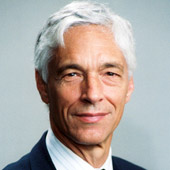Regional Voices in Global Governance: A Natural Progression (Part I)
How will forums such as the G-20 and the G-8 evolve to become more inclusive?
March 24, 2009
Global summitry began in November 1975 at Rambouillet in France, prompted by the first oil shock and the subsequent international monetary crisis.
The six participants were the United States, the United Kingdom, France, Germany, Italy and Japan.
Political pressures to expand participation were evident from the outset. The case for Italy's participation in this "economic summit" was based on political arguments, not economic ones. The next year, Canada was also added essentially for political reasons.
In today's world, it is hard to understand why it took 24 years to create the first truly global governance forum: the G-20. Even then, in 1999, the participants were finance ministers and central bank governors, not heads of state or government.
Most of the credit for inventing the G-20 forum goes to Canadian Finance Minister (and subsequently Prime Minister) Paul Martin. Fending off the inevitable pressures to expand the forum beyond 20 members was a masterpiece of diplomacy.
Significantly, the G-20 forum included only 19 countries. The 20th seat was filled by a regional organization: the European Union.
A major factor in the relative success of the G-20 of finance ministers and central bank governors was the balance struck between "old powers" and "new powers." Including the European Union and Russia, ten "old powers" were matched by ten "new powers."
The regional composition was distinctly less balanced, however. Europe was significantly overrepresented — with four seats plus the EU seat. North America was represented by all three of its countries.
Asia was well represented by five countries (Japan, China, India, Indonesia and South Korea), hardly excessive considering they account for 40% of the world's population. South and Central America appeared to be underrepresented, but less so with Mexico identifying more with its Latino neighbors than with the United States and Canada.
Africa was arguably under-represented in political terms (South Africa only), but not so much by economic measures.
The Middle East was weakly represented by two "special cases": Saudi Arabia and Turkey. Finally, Australia and Russia were also "special cases" from a regional perspective.
Two questions arise at this point. First, with the precedent of including a regional organization leader as far back as 1977 (the EU in the G-8 Summit forum), why were no other regional organization leaders included in the G-20 forum of financial ministers and central bank governors?
Second, in both forums, were any of the country participants in effect "representing" other countries in their geographical region?
The first question seems to have a simple answer: In the 1975-2000 period, there were no other regional organizations approaching the stature of the EU. In the case of Latin America, the Organization of American States (OAS) had two problems.
First, it was dominated by the United States. Including an OAS representative would have given the United States one-and-a-half seats at the table. Second, the OAS was hamstrung because of the U.S. policy of refusing to recognize the communist government of Cuba.
In the case of Asia, the only regional organization in existence throughout the 1975-2000 period was the Association of Southeast Asian Nations (ASEAN).
ASEAN, however, never approached the unity of purpose and values that were hallmarks of the EU, even before Cambodia, Laos, Myanmar and Vietnam joined the initial six countries in the late 1990s.
Moreover, ASEAN only acquired a formal legal status at the end of 2008, when its first charter was ratified.
Even now, with Asian regional cooperation strengthened considerably through the East Asia Summit process, Asia is a long way from being able to speak with a single voice. In essence, this is because it includes one proud "old power" (Japan) and two proud "new powers" (China and India).
As a consequence of this dispersion of power, ASEAN stands at the center of Asian regional cooperation in remarkable and distinctive fashion. ASEAN is arguably the second-strongest regional organization in the world after the EU.
In the case of Africa, the first design for a regional organization, the Organization of African Unity (OAU), was eventually discarded and replaced by the African Union (AU). And the Middle East even today remains deeply divided, especially by religious differences, without a strong regional organization.
This overview begs the question of why it was necessary to include the EU in the G-7/G-8 Summit process back in 1977. The best answer is relevant to the broader discussion — political expediency.
In other words, the second-tier European countries (notably, Belgium, the Netherlands and Sweden, initially, and more recently Spain) could not tolerate being left out of the process. Being represented via the EU was a compromise, a way of giving these countries at least part of a voice.
Takeaways
ASEAN is arguably the second-strongest regional organization in the world after the EU.
Why was it necessary to include the EU in the G-7/G-8 Summit process back in 1977? The best answer is relevant to the broader discussion — political expediency.
In today's world, it is hard to understand why it took 24 years to create the first truly global governance forum: the G-20.
A major factor in the relative success of the G-20 of finance ministers and central bank governors was the balance struck between "old powers" and "new powers."
Read previous
Tata: How India Goes Global
March 23, 2009
